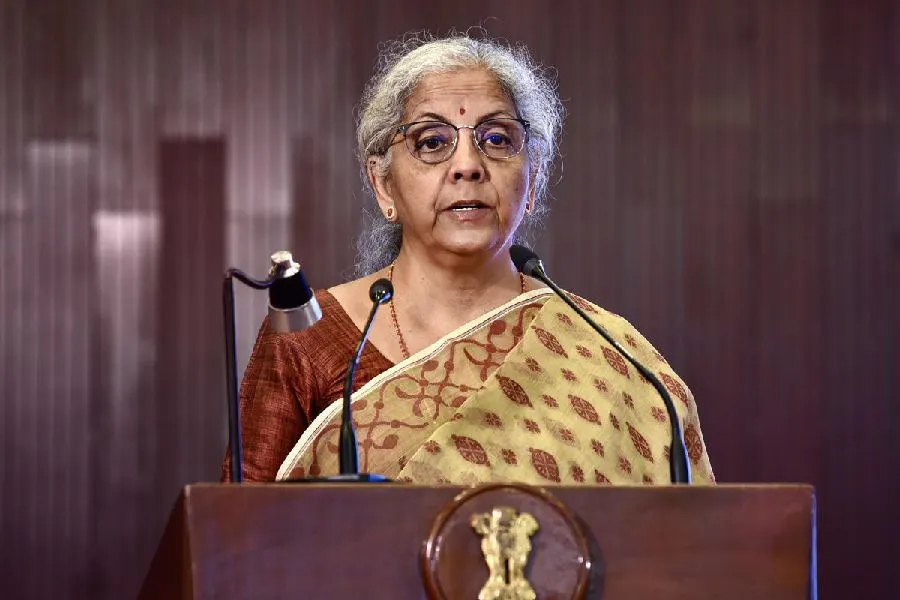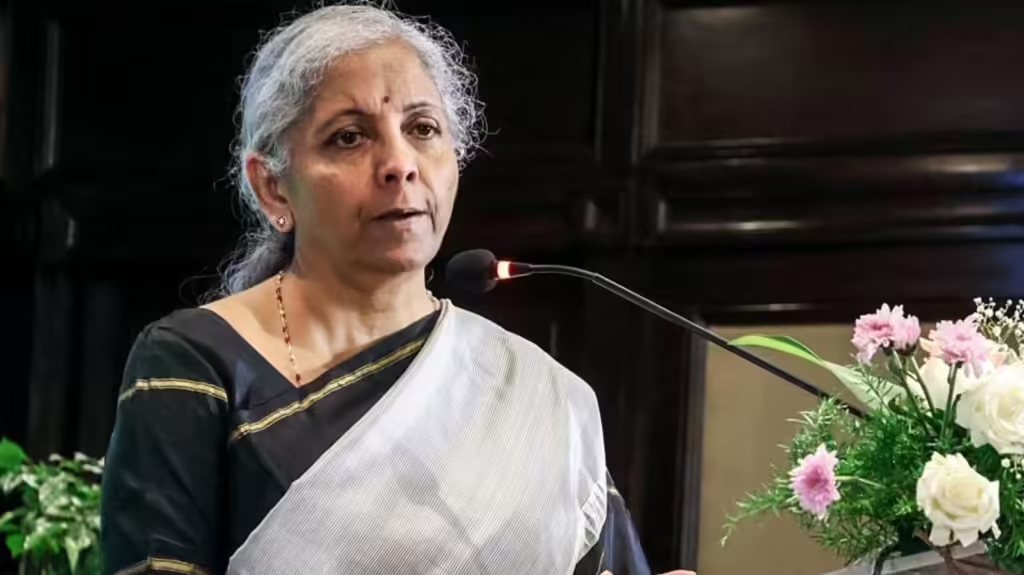Introduction
Table of Contents
Explore the life, achievements, and leadership of Nirmala Sitharaman, India’s first full-time female Finance Minister, and her impact on the nation’s economy.
Nirmala Sitharaman is a name that has become synonymous with India’s economic policies, strategic reforms, and financial leadership. As the Finance Minister of India, she has played an instrumental role in shaping the country’s economic trajectory, navigating challenges, and making bold decisions that have had far-reaching consequences for India and its global standing. Not only is she the first woman to hold the position of Finance Minister on a full-time basis, but she is also one of the most influential political figures in the nation today.
This article will explore Nirmala Sitharaman’s life, career, achievements, and contributions as Finance Minister, with a focus on her leadership style, key reforms, and the significant impact she has had on India’s economy. We will also address frequently asked questions (FAQs) about her life and career, providing a comprehensive look at the woman behind India’s financial decisions.
Early Life and Education: Foundations of a Leader
Born on August 18, 1959, in Madurai, Tamil Nadu, Nirmala Sitharaman grew up in a middle-class family. Her father, Narayan Iyer, was a retired Indian Railways officer, and her mother, Savitri Iyer, was a homemaker. From a young age, she was encouraged to prioritize education, hard work, and discipline—values that shaped her personal and professional life.
Sitharaman completed her schooling in Madurai before moving to New Delhi to pursue higher studies. She graduated with a degree in Economics from Seethalakshmi Ramaswamy College, Madurai, and later went on to study at the prestigious Jawaharlal Nehru University (JNU), where she earned a Master’s degree in Economics. Further honing her academic credentials, Sitharaman also earned a Master’s degree in Business Administration from the London School of Economics, cementing her expertise in economics and global trade.
Her education and exposure to international markets provided a strong foundation for her later political career, particularly in the areas of commerce, defense, and finance.

Political Career: From BJP Spokesperson to Finance Minister
Entry into Politics
Nirmala Sitharaman entered the political arena in the early 2000s, joining the Bharatiya Janata Party (BJP). Initially, she worked behind the scenes as a party spokesperson, where she became known for her sharp political acumen and effective communication skills. Her ability to articulate the party’s viewpoints made her a prominent figure in the BJP.
Her first significant political role came in 2014, when Prime Minister Narendra Modi appointed her as the Minister of State for Commerce and Industry with Independent Charge. In this role, she was responsible for handling foreign trade policies, industrial reforms, and fostering economic growth through global partnerships. Sitharaman worked hard to create a favorable business environment and advocated for policies that encouraged foreign investment in India.
Minister of Defence: A Trailblazer
In 2017, Nirmala Sitharaman was appointed the Minister of Defence, becoming the first full-time woman Defence Minister of India. In this role, she was tasked with overseeing the country’s defense strategies, military modernization, and defense procurement policies. Her tenure as Defence Minister was marked by several key decisions, including the strategic surgical strikes against terror camps in Pakistan, aimed at sending a strong message to the enemy.
Sitharaman also worked on modernizing India’s military by pushing for reforms in defense technology, procurement processes, and enhancing defense cooperation with key global powers.
Finance Minister: A Historic Appointment
In May 2019, after the BJP’s overwhelming victory in the general elections, Nirmala Sitharaman was appointed as the Finance Minister of India, making history as the first woman to hold the position on a full-time basis. Her appointment came at a time when India’s economy was grappling with multiple challenges, including a slowdown in growth, rising unemployment, and economic volatility due to global factors.
Sitharaman’s role as Finance Minister has been transformative. From handling economic stimulus during the COVID-19 pandemic to introducing landmark reforms in India’s tax system, she has worked tirelessly to strengthen India’s economic foundation.
Key Achievements as Finance Minister
1. Economic Stimulus and Atmanirbhar Bharat Package
The COVID-19 pandemic was one of the biggest challenges India faced during Sitharaman’s tenure. In response, she introduced the Atmanirbhar Bharat Package, an economic relief package aimed at reviving the economy, supporting businesses, and boosting domestic manufacturing. The package, which included direct financial support to the vulnerable sections of society, aimed to create a self-reliant India while strengthening the manufacturing sector.
2. Goods and Services Tax (GST) Reforms
Since her appointment, Sitharaman has worked to streamline India’s tax policies. One of her significant contributions has been her efforts to simplify the Goods and Services Tax (GST), which faced criticism for its complexity and implementation challenges. She pushed for reducing tax rates on several essential goods, provided relief to small businesses, and implemented technology-driven tax reforms to reduce human interface and improve transparency in tax administration.
3. Financial Inclusion and Credit Access
Sitharaman has focused on improving financial inclusion in India, ensuring that banking services reach the underserved and unbanked populations. Programs like Pradhan Mantri Jan Dhan Yojana (PMJDY) aimed to open millions of bank accounts for rural citizens, while initiatives to increase access to credit for small businesses have been central to her economic strategy.
4. National Infrastructure Pipeline (NIP)
One of her most ambitious initiatives has been the National Infrastructure Pipeline (NIP), which envisions an investment of Rs 111 lakh crore in infrastructure projects across key sectors such as energy, transportation, and urban development. The NIP is expected to create millions of jobs and drive India’s economic growth over the next few years, laying the groundwork for a more sustainable and resilient economy.
5. Disinvestment and Privatization Efforts
As part of her vision to reduce fiscal deficits and boost government revenue, Sitharaman has championed disinvestment in non-strategic public sector enterprises (PSUs). Her strategy involves privatizing sectors like aviation, banking, and energy, enabling the government to focus resources on strategic priorities while creating a more competitive and efficient private sector.
Leadership Style and Personal Attributes
Nirmala Sitharaman’s leadership style is marked by her pragmatic, methodical approach to problem-solving and decision-making. She is known for her sharp analytical skills, attention to detail, and ability to stay calm under pressure. Whether negotiating trade deals, managing the national budget, or overseeing military operations, Sitharaman has displayed exceptional poise and determination.
Her political career is also characterized by a deep sense of humility and commitment to public service. Despite her high-profile positions, Sitharaman has remained grounded, often choosing to maintain a low personal profile. Her leadership is driven by a strong sense of purpose: to make India an economically strong, self-reliant nation.
International Recognition
Nirmala Sitharaman’s impact extends beyond India’s borders. Her work in handling India’s economic reforms and policy decisions has garnered global attention. She was named among the most powerful women in the world by Forbes and is regularly featured in global rankings for political and economic leadership. As India’s Finance Minister, she has represented India in international forums like the G20, where she has advocated for fairer global financial systems and increased cooperation between nations to address economic challenges.

Frequently Asked Questions (FAQs)
1. Who is Nirmala Sitharaman?
Nirmala Sitharaman is the Finance Minister of India and a senior leader of the Bharatiya Janata Party (BJP). She is the first full-time woman to hold the position of Finance Minister in India and has served in various other key cabinet roles, including Minister of Defence.
2. What is Nirmala Sitharaman known for?
Sitharaman is known for her bold economic reforms, leadership during the COVID-19 pandemic, handling of the Goods and Services Tax (GST) system, and her efforts to promote financial inclusion and infrastructure development in India.
3. When did Nirmala Sitharaman become the Finance Minister?
Nirmala Sitharaman became the Finance Minister of India in May 2019, after the re-election of the Modi-led government.
4. What are Nirmala Sitharaman’s major policy reforms?
Her major reforms include the Atmanirbhar Bharat package for economic stimulus, simplification of GST, the National Infrastructure Pipeline (NIP), and privatization of public sector enterprises.
5. What is the National Infrastructure Pipeline (NIP)?
The NIP is a government initiative that aims to invest Rs 111 lakh crore in infrastructure projects across various sectors such as energy, transport, and urban development to boost India’s economic growth and create jobs.
6. Has Nirmala Sitharaman received international recognition?
Yes, Nirmala Sitharaman has been recognized globally for her work as India’s Finance Minister and has been featured in international lists such as Forbes’ list of the most powerful women in the world.
7. How did Nirmala Sitharaman contribute to India’s defense sector?
As Defence Minister, she took bold steps to modernize India’s defense forces, managed defense procurement, and oversaw India’s military operations, including the surgical strikes against terrorist camps in Pakistan.
Conclusion
Nirmala Sitharaman’s journey from a small-town girl to India’s Finance Minister is a remarkable testament to her hard work, intellect, and determination. As a leader, she has navigated complex economic challenges with a strategic vision, ushering in reforms that have paved the way for
a more robust Indian economy. Through her policies, leadership, and vision, she continues to shape the future of India’s economy, making her one of the most important political figures of her generation.
For More Information, Visit https://watchnewz.com/
